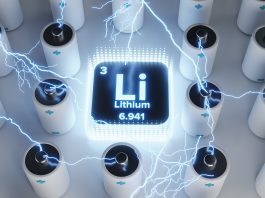Scientists at the University of Hong Kong (HKU) have pioneered a new rechargeable aqueous magnesium battery that provides an environmentally friendly, safe, low-cost energy alternative.
This battery breakthrough broadens the horizons of developing post-lithium-ion batteries. The novel innovation is a rechargeable aqueous battery comprising a magnesium metal anode which, when tested, has demonstrated excellent rechargeability and performance.
Professor Dennis Leung, the leader of the research from the Department of Mechanical Engineering at HKU, commented: “With a high theoretical capacity and negative electrochemical potential, magnesium is an attractive anode material. Magnesium is also non-toxic and Earth-abundant.”
The comprehensive research can be found here.
Magnesium’s exceptional abundance
The Earth’s crust is incredibly rich in magnesium, making up more than 2% – equating to more than 1,000 times that of lithium, naturally making the metal a prime candidate for battery production. However, one of the challenges associated with using magnesium in batteries is that it can be difficult to utilise due to its high reactivity.
This is because magnesium is passivated when exposed to moisture, which creates an impermeable oxidation film that obstructs redox reactions. Previous research has investigated magnesium batteries with non-aqueous organic electrolytes, but these are usually expensive, unstable, and poorly conductive.
Despite this, Professor Leung is confident that aqueous electrolytes can offer a lost-cost and safe solution, even with the challenges posed by magnesium.
Leung said: “It would make a promising candidate for low-cost and sustainable batteries if we can unlock the potential of aqueous Mg batteries.”
Developing the rechargeable magnesium battery
Despite previous unsuccessful efforts, the team discovered that rechargeability could be achieved in an aqueous magnesium battery system. They found that the passivation film can be regulated by employing an aqueous chloride-based ‘water-in-salt’ electrolyte – a supersaturated mixture where the solute’s mass outweighs the solvent.
Dr Wending Pan, a postdoctoral fellow from the Department of Mechanical Engineering, explained: “The limited availability of free water in the water-in-salt electrolyte restricts water decomposition and addresses the main cause of passivation.”
The scientists also uncovered that the adsorption of chloride ions protects the magnesium surface through partially dissolving oxides and exposing native metal for redox reactions. Due to the limited free water, the chloride-based water-in-salt electrolyte expertly mitigates magnesium passivation.
PhD student Kee Wah Leong commented: “Using the novel water-in-salt electrolyte, the original passivation film can be converted into a conductive metallic oxide layer, providing ionic pathways for rechargeable battery operations.”
Battery performance
The team’s magnesium battery exhibited superb rechargeability for over 700 stable cycles and a high discharge plateau of 2.4-2.0 V, which is far higher than the cell voltage of other multivalent-ion batteries, such as Zn and AI metal batteries. Currently, the voltage of the magnesium battery is exceeded by commercial lithium-ion batteries but could be enhanced through further development.
“The battery serves as a proof-of-concept and demonstrates for the first time the long-term cyclability of an aqueous magnesium metal battery,” concluded Leung.









